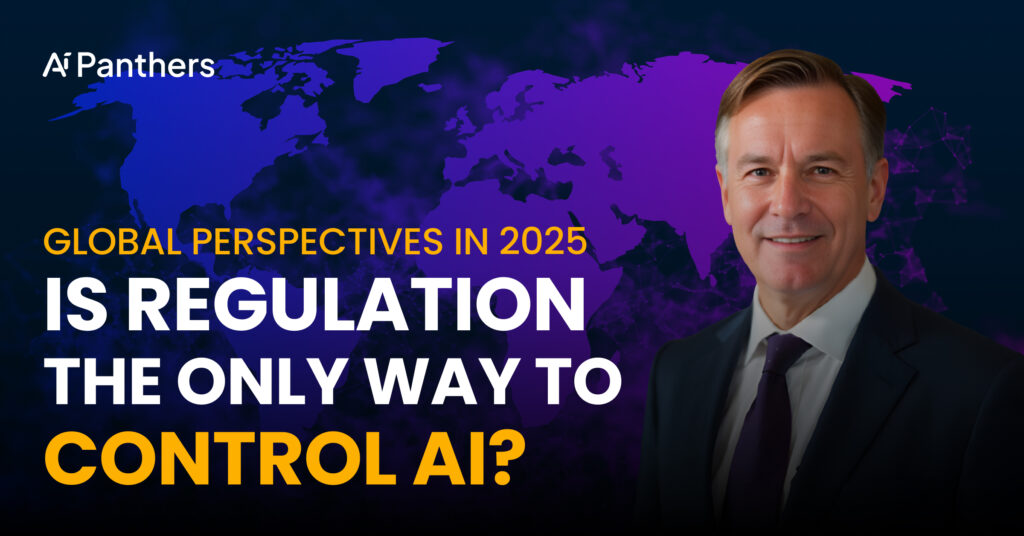
Artificial Intelligence (AI) is woven into each part of our current life, such as health care, education, investment, defense, enjoyment, and even a personal chemical bond. Their unprecedented addition, accompanied by excitement and despair, was a journey together with excitement and despair. As machine intelligence frameworks become more autonomous and powerful, the question facing the neighborhood is whether or not machine intelligence should remain regulated in any way.
In 2025, arguments that exceed human intelligence’s rejection reach fever pitch. Management, corporations, ethicists, and the public are wrestling with a fundamental paradox: regulation is the exclusive system for controlling artificial intelligence, or could there be other tactics, such as sectoral self-governance, available inventions, or a populace yardstick, that deal with the uncertainty of automated reasoning while retaining their own assurance?
That website provides an international perspective on automated logic restrictions, including concerns about innovation and safety. We’re going to Honkytonk in the middle of the various approaches, where the various States have mastered the obstacle, whatever the authorities assume, and regardless of whether or not the administration is truly adequate.
Overcoming the last numerous eras, automated reasoning has advanced beyond the basic automation undertaking to perform deep logic, imagination, passionate detection, and even methodical discovery. Large Dialect Models (LLMs) recognize that GPT-5 and multi-modal organizations can immediately cultivate recent search hypotheses, acquire colonies, and design advertising tactics.
The current rapid development of machine learning systems has a double-edged sword: its ability to decipher challenges completely, but also its potential for misuse.
Similar to the danger, the population needs a mechanism to regulate machine intelligence before it gyrates out of control.
The EU’s machine acumen execution, known as the GDPR for machine intelligence, will enter into force prematurely in 2025. It classifies machine intelligence installations according to the degree of hazard and imposes stringent attachment criteria, audit information, and willingness to accept incorrect objectives. If you don’t comply, expect severe punishment.
Key Features:
The United States. For the time being, however, the metamorphosis is driven by the pressure of the advocacy groups and the serious technical learning center incident of 2024. By 2025,.
China’s People’s Republic of China (PRC) has strong artificial intelligence control, but with a chauvinist focus. Socialistic criteria must be taken into account for machine awareness, and companies must take action together with the agency’s announcement.
Key Moves:
Stop Monopoly aims at preventing tech giants from becoming too powerful by regulating their access to important automated reasoning systems.
The administration admires the doctor. ‘We risk building equipment that does not function properly in combination with human ethics.
When the General Data Protection Regulation ( GDPR ) comes into force in 2018, several fear that it will smother Europe’s technical school’s growth. Alternatively, the GDPR has developed into a global model for statistical entitlements.
Lessons for AI Regulation:
Could an “AI GDPR” similarly pave the way for responsible growth?
The United States. Try to introduce a computational responsibility depiction mandating an audited account in machine intelligence frameworks. He’s not going to pass Congress.
Why it failed:
That highlights the need for not only great objectives but also tactical government maneuvering and populace retaliation.
Regulate artificial intelligence isn’t just about controlling a tool; it’s about controlling the structure of consciousness.
Big Questions:
Ethicists argue that regulating AI is not morally neutral — it shapes what intelligence becomes.
Just like financial firms undergo audits, companies now hire AI auditing agencies to:
Top Firms (2025):
Impact:
This “audit economy” shows that market incentives can work alongside regulation.
Region | Cultural Attitude | Regulation Focus |
Europe | Skeptical, rights-focused | Consumer protections |
USA | Innovation-driven, freedom-centric | Corporate responsibility |
China | State-centric, stability-focused | Alignment with government |
Japan | Tech-optimistic, harmonious | Societal benefit |
Africa | Growth-focused, cautious optimism | Sustainable development |
Insight:
A ‘one size does not fit all ” legal rights will never be exported internationally. Management must be a place where the planet loses its coherence.
Let’s imagine three futures based on how we approach AI regulation now:
9.1 The Utopia Scenario
Result:
AI becomes humanity’s most powerful ally.
9.2 The Dystopia Scenario
Result:
Humanity lives in fear of its own creations.
9.3 The Middle Ground
Result:
A challenging but manageable coexistence with AI.
10.1 Yoshua Bengio (AI Pioneer)
In order to avoid a permanent decline in artificial intelligence, it is essential to treat it as both an opportunity and a threat and regulate it alongside intelligence.
10.2 Kate Crawford (Author, Atlas of AI)
“AI reflects our societal structures. Without careful regulation, it will only amplify existing injustices.”
10.3 Andrew Ng (AI Educator)
“Too much fear of AI governance uncertainty misses out on their wide potential. Stability is essential.”
These thought leaders stress balance, urgency, and responsibility.
Forward-looking companies are embracing regulation instead of fighting it.
Best Practices Emerging in 2025:
Companies that adapt early win consumer trust and long-term viability.
Regulation alone cannot guarantee AI’s safety.
But without regulation, we risk chaos.
A layered approach combining:
It is our best chance at steering AI toward good.
The future of automated reasoning and kindness rests not only in Glassy fries and algorithms but also in the principles, rules, and corporate self-control we choose to shape them.
We are not just programming machines.
We are programming the future.
Let’s program it wisely.